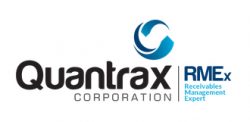
AN INTERVIEW WITH RANJAN DHARMARAJA, CEO OF QUANTRAX CORPORATION
My name is Mark Namba, and I have been in technology and the ARM industry for a very long time. When it was clear that the role of dialers was changing forever, it was time for a career change, and I moved into the different, but familiar area of collection software. I am now proud to be a part of a company that, in my opinion, has single-handedly changed the landscape of collections. Against great odds, Quantrax has relentlessly persevered to educate the industry about intelligent software and its potential. I am not referring to adding analytics or decision-making to a system. I am talking about a system built ground-up to be intelligent in every area of operation.
Although he has not received the recognition he deserves, Ranjan Dharmaraja has supported our industry for many years, designing and building technology that he believed would one day be vital when it was time to modernize and evolve. Today, with higher volumes, complex compliance requirements, security concerns and lower fees, change is clearly called for. For example, how many collection systems can scrub a cell phone in real-time and ask for express consent? How many products allow an agent to send a text message from their desktop, asking the consumer for permission to text them their payment reminders? I am happy and proud to be associated with such a visionary company, and recently took some time to get Ranjan’s thoughts on changing consumer behavior, and the impact of modern technology on contact strategy.
MARK – Ranjan, Quantrax has always stated that it was important to try to anticipate the future, and create technology based on those predictions. What do you see in the crystal ball?
Let me make some predictions that I know will come true in the next 2 years.
- The primary communication channel for consumers, will shift from phone calls to web-based and self service options
- Text messaging and associated mobile technologies will be widely adopted to improve customer service and reduce costs
- Thousands of collection agents will be replaced by chatbots that will handle simple to increasingly difficult tasks
These are major changes with some significant, non-trivial implications. It is important that we understand and prepare for a future that is likely to include these changes.
MARK – You talk a lot about about knowledge-based technology. You say the collection industry needs it. Explain the shift in technology.
Artificial intelligence in the collection industry (it is increasingly being referred to as augmented intelligence) is about computer programs that can mimic the thinking and decision-making of a human collection expert. With so many parameters and circumstances to consider, agents often make poor decisions when it comes to next steps. The new generation of collection systems will integrate augmented intelligence with modern technologies, allowing machines to handle repetitive tasks and make management decisions that were traditionally made by humans.
And when will this start to happen? It has already happened. To put this conversation in perspective, our company has been developing artificial intelligence (AI) based collection software for over 25 years. We were around when collection technology was starting to mature, and we have lived though a recent period of tremendous change in every industry, brought about by web-enabled services and smartphone applications. We have seen some great companies virtually disappear or lose significant market share because they failed to innovate – Nokia, Blackberry, Blockbuster, Polaroid and Yahoo were household names, just 10 years ago. It was 20 years ago that IBM’s Deep Blue beat the world chess champion Gary Kasparov, and it was over 5 years ago that IBM again used AI to destroy the best Jeopardy players the world had seen.
And what did the collection industry and most companies do? They watched and did nothing. Why was Quantrax different? The most widely-used collection platforms were built by collection experts, who hired programmers in the 1980’s and later, to write their collection software. This worked as long as account receivables management was a “collection problem”. When it started to become technology-dependent, requiring analytics, machine thinking, systemic compliance and robotics, traditional designs could not deliver results. Quantrax was not created by collection experts, it was a technology and engineering company. It correctly predicted that debt collection would become a numbers-game, and that it would require AI-based engineering solutions! Today, there is only one company that can claim to have build an expert system, ground up. That company is Quantrax. It’s AI-technology is tried, tested and proven. For many interesting reasons, it has also been the best-kept secret in the industry.
MARK – So what does the collection industry look like, in a knowledge age that leverages modern technology?
We will trust machines to make more decisions for us, and levels of automation will increase significantly.
- Account-level decisions will be made by AI-based software
- Cell phones will be identified in real-time, and express consent will be obtained when cell numbers are added or there is an RPC
- All phone numbers will be attempted evenly at the right time (each attempt to a number will be placed at a different time in the day)
- The technology will offer you every possible form of contact strategy – Mail, Email, phone calls, incoming text messages, outgoing text messaging, message drops to voicemail, IVR’s and intelligent chatbots. The software will automatically move customers in and out if different “campaigns” based on circumstances and results
- Compliance will be systemically managed, without manual controls or management supervision (e.g. Calls and messages will be counted and controlled based on client, state or city regulations)
- AI-based software chatbots will effectively negotiate payments, document disputes, bankruptcies, and the reasons a consumer can not make a payment. Requests for itemized statements and updated insurance information are recorded, along with requests for an agent
- Client services will primarily be staffed by client service chatbots that can provide account statuses, place accounts on hold and update balances with direct payments
- The technology will take scripting to new levels – The software looks at the consumer, account history and current circumstances, and creates a script at the time the account is presented to the user
- Traditionally “fragmented technology” will be integrated – e.g. Call recordings are accessed from agent screens
- Smart phones display your KPI’s (collections, fees, agent performance and key client numbers) and clients can use the same technology to receive important updates and review collection dashboards
MARK – Should the ARM industry be concerned about tomorrow’s world?
Of course it should be! The collection industry thrives on its ability to do better work than creditors and first party lenders. Traditionally, these creditors did not have the resources (people, knowledge or technology) to compete with collection agencies. But what if these modern tools were available to them, and were integrated with their billing and customer service systems? Could their collection services compete with collection companies that did not evolve? Of course that could happen. Just look at the over-confident, stable and traditional taxi business that was destroyed by an upstart smart phone app called Uber? Yes, we need an Uber for the ARM industry, today, and that is what technology and a knowledge-based business model will offer us. There are 90 million millennials in the United States, who earn to spend and do not want to talk to collection agents during your working hours. How do you contact them? Most of us have not even thought about the solutions that can address this new phenomenon. We can not spin aging technology, continue to fool ourselves, or be in denial. It’s time to reinvent ourselves or we will die.
MARK – Ranjan, do you have any advice for the industry?
Our technology does everything I have talked about in the previous section. It is not future technology. I have often referred to Apple and Uber, and what they did to businesses that refused to modernize. It’s a different industry, but we have the same potential in collections. Unfortunately, collections can not be fit into a smart phone app. We’ve been doing this for 25 years and it’s going to take a long time for any company to create another “expert system”, which is the term we use for a system that can perform at the level of a human expert. And if I may make one more prediction – The shakeup in collection software will continue, as companies scramble to modernize their aging systems!



